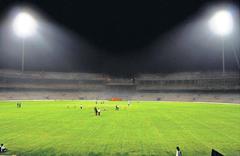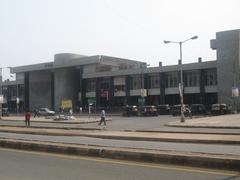Visiting Belapur Fort: History, Tickets, and Tips
Date: 23/07/2024
Introduction
Table of Contents
- [History of Belapur Fort](#history-of-belapur-forthistory-of-belapur-fort)
- [Origins and Construction](#origins-and-constructionorigins-and-construction)
- [Portuguese and Maratha Control](#portuguese-and-maratha-controlportuguese-and-maratha-control)
- [British Era and Decline](#british-era-and-declinebritish-era-and-decline)
- [Architectural Features](#architectural-featuresarchitectural-features)
- [Ramparts and Bastions](#ramparts-and-bastionsramparts-and-bastions)
- [Gates and Entrances](#gates-and-entrancesgates-and-entrances)
- [Water Reservoirs](#water-reservoirswater-reservoirs)
- [Watchtowers](#watchtowerswatchtowers)
- [Restoration Efforts](#restoration-effortsrestoration-efforts)
- [Cultural Significance](#cultural-significancecultural-significance)
- [Visitor Information](#visitor-informationvisitor-information)
- [Best Time to Visit](#best-time-to-visitbest-time-to-visit)
- [Accessibility](#accessibilityaccessibility)
- [Guided Tours](#guided-toursguided-tours)
- [Safety Precautions](#safety-precautionssafety-precautions)
- [Photography](#photographyphotography)
- [FAQ](#faqfaq)
- [What are the visiting hours for Belapur Fort?](#what-are-the-visiting-hours-for-belapur-fortwhat-are-the-visiting-hours-for-belapur-fort)
- [How much are the tickets for Belapur Fort?](#how-much-are-the-tickets-for-belapur-forthow-much-are-the-tickets-for-belapur-fort)
- [What is the best time to visit Belapur Fort?](#what-is-the-best-time-to-visit-belapur-fortwhat-is-the-best-time-to-visit-belapur-fort)
- [Call to Action](#call-to-actioncall-to-action)
History of Belapur Fort
Origins and Construction
Belapur Fort, located in Navi Mumbai, India, is a historical structure with roots tracing back to the 16th century. The fort was originally constructed by the Siddis of Janjira, a prominent dynasty known for their naval prowess and strategic fortifications along the western coast of India. The Siddis, who were of African descent, played a significant role in the maritime history of the region. The construction of Belapur Fort was part of their broader strategy to control the coastal trade routes and protect their territories from rival powers.
Portuguese and Maratha Control
In the early 17th century, the fort came under the control of the Portuguese, who were expanding their influence along the Konkan coast. The Portuguese recognized the strategic importance of Belapur Fort and made several modifications to strengthen its defenses. They used the fort as a base to control the surrounding region and safeguard their trade interests.
By the late 17th century, the fort became a contested site between the Portuguese and the Marathas, a powerful regional power led by the legendary warrior king, Chhatrapati Shivaji Maharaj. In 1733, the Marathas, under the leadership of Chimaji Appa, successfully captured Belapur Fort from the Portuguese. This victory was part of a larger campaign to expel the Portuguese from the Konkan region. The Marathas further fortified the structure and used it as a key military outpost.
British Era and Decline
The British East India Company, which was steadily expanding its control over India, recognized the strategic importance of Belapur Fort. In 1817, during the Third Anglo-Maratha War, the British forces captured the fort from the Marathas. The fort’s capture marked the end of Maratha resistance in the region and solidified British dominance over the Konkan coast.
Under British rule, Belapur Fort gradually lost its military significance. The British focused on developing Mumbai (then Bombay) as their primary port and administrative center, leading to the fort’s decline. By the mid-19th century, the fort was largely abandoned and fell into disrepair.
Architectural Features
Belapur Fort is an excellent example of coastal fort architecture, blending elements from different periods and rulers. The fort’s design reflects the strategic needs of its various occupants, including the Siddis, Portuguese, Marathas, and British. Key architectural features include:
- Ramparts and Bastions: The fort’s thick stone walls and bastions were designed to withstand artillery attacks and provide a vantage point for defenders.
- Gates and Entrances: The main entrance of the fort is a large, arched gateway, typical of Maratha architecture. The gateway is flanked by smaller entrances and guard rooms.
- Water Reservoirs: The fort contains several water reservoirs and wells, ensuring a steady supply of water during sieges.
- Watchtowers: Strategically placed watchtowers provided a panoramic view of the surrounding area, allowing defenders to spot approaching enemies.
Restoration Efforts
In recent years, there have been efforts to restore and preserve Belapur Fort. The Navi Mumbai Municipal Corporation (NMMC) has undertaken several initiatives to protect the fort’s structure and promote it as a historical site. Restoration work includes repairing the fort’s walls, clearing vegetation, and installing informational plaques for visitors.
Cultural Significance
Belapur Fort holds significant cultural and historical value for the local community and historians. It serves as a reminder of the region’s rich and diverse history, marked by the rise and fall of various powers. The fort is also a symbol of the resilience and strategic acumen of its builders and defenders.
Visitor Information
Best Time to Visit
The ideal time to visit Belapur Fort is during the cooler months, from October to March, when the weather is pleasant.
Accessibility
The fort is located in the Belapur area of Navi Mumbai and is easily accessible by road. Visitors can take local trains to Belapur station and then hire a taxi or auto-rickshaw to reach the fort.
Guided Tours
Hiring a local guide can enhance the experience by providing in-depth historical insights and anecdotes about the fort.
Safety Precautions
The fort is in a state of partial ruin, so visitors should exercise caution while exploring the site. Wearing comfortable footwear and carrying water is advisable.
Photography
The fort offers stunning views of the surrounding landscape, making it a great spot for photography enthusiasts.
FAQ
What are the visiting hours for Belapur Fort?
Belapur Fort is open to visitors from 9 AM to 6 PM daily.
How much are the tickets for Belapur Fort?
There is no entry fee for visiting Belapur Fort.
What is the best time to visit Belapur Fort?
The best time to visit is from October to March, during the cooler months.
Call to Action
Belapur Fort stands as a testament to the region’s historical legacy and offers a fascinating glimpse into the past for visitors and history buffs alike. For more detailed information, you can visit the Navi Mumbai Municipal Corporation’s official website. Don’t forget to check out our other articles on historical sites in Navi Mumbai and follow us on social media for updates!

